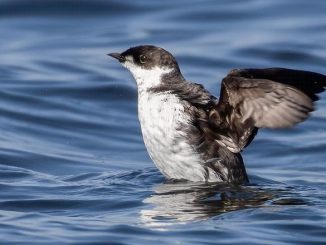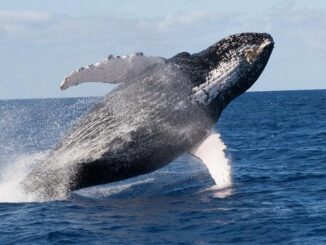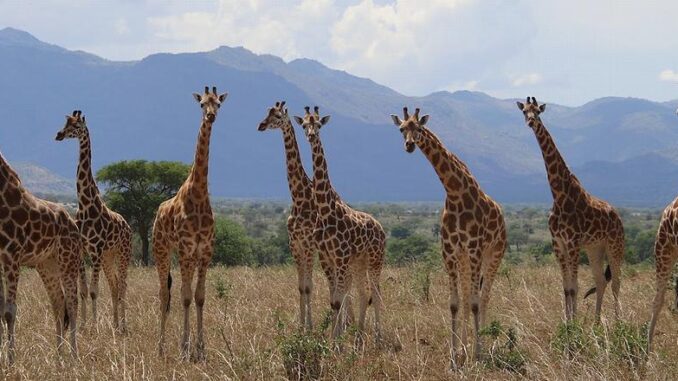
WINDHOEK, Namibia, September 8, 2025 (ENS) – A fresh assessment of the tallest living land animal and largest ruminant on Earth has officially recognized four distinct species of giraffes, overturning previous classifications of giraffes as a single species. The new study reshapes how the diversity of the world’s giraffe species is understood and conserved.
The assessment, known as a taxonomic review, was conducted by the IUCN Species Survival Commission’s Giraffe and Okapi Specialist Group Taxonomic Task Force, part of the nonprofit International Union for the Conservation of Nature based in Gland, Switzerland with a worldwide network of offices.
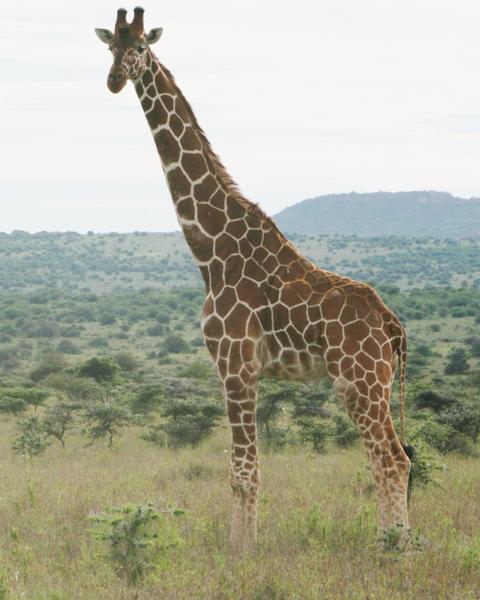
With over 10,000 members in 186 countries, the Species Survival Commission is the largest of the seven expert commissions of IUCN. It enables IUCN to influence, encourage and assist societies to conserve biodiversity by building knowledge on the status and threats to species, providing advice, developing policies and guidelines, making conservation plans, and energizing conservation action.
Historically, all giraffes, formally known as Giraffa spp., have been classified as a single species – Giraffa camelopardalis – with nine subspecies, but these animals have long been the subject of taxonomic uncertainty.
In response to growing scientific evidence and the urgent need for clearer conservation planning, the GOSG launched a Taxonomic Task Force in 2024 to conduct a comprehensive review of the latest genetic and structural data on giraffes and the data on their geographic distribution.
“This landmark taxonomic revision by the IUCN Giraffe and Okapi Specialist Group reflects the best available science and provides a globally standardized framework to inform conservation,” said Michael Brown, co-chair of the Giraffe and Okapi Specialist Group as well as conservation science coordinator for the Giraffe Conservation Foundation in Windhoek, Namibia and a co-author of the assessment.
“Recognizing these four species is vital not only for accurate IUCN Red List assessments, targeted conservation action and coordinated management across national borders. The more precisely we understand giraffe taxonomy, the better equipped we are to assess their status and implement effective conservation strategies,” Brown said.
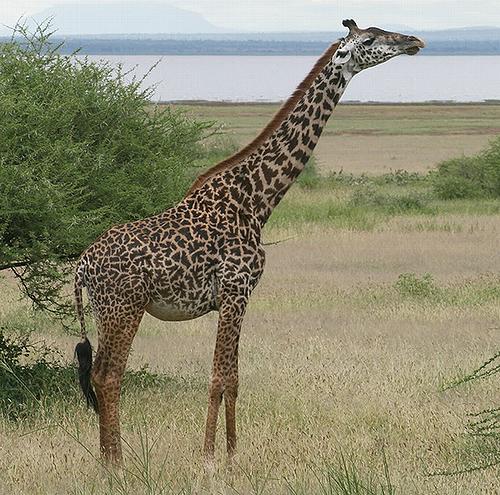
The Task Force evaluated extensive genetic data from multiple peer-reviewed studies, many of which investigated giraffe genetics, making giraffes among the genetically best-studied large mammal taxa in Africa.
Analyses of nuclear and mitochondrial DNA consistently revealed large differences between several giraffe lineages, supporting the recognition of multiple species.
Complementing the genetic work, the review also incorporated studies of morphological differentiation, including notable differences in skull structure and bone shape across regions.
Biogeographic assessments also considered the role of natural barriers – such as major rivers, rift valleys and arid zones – that could have contributed to evolutionary isolation. Together, these multiple lines of evidence provide scientific support for elevating certain giraffe populations to full species status, reflecting their distinct evolutionary histories.
Most recently, IUCN researchers are dividing them into four existing species, with seven subspecies, that can be distinguished by their fur coat patterns.
Following an extensive review of published literature, original datasets, and expert consultation, the GOSG now recognizes four distinct giraffe species and their constituent subspecies:
- Northern giraffe (Giraffa camelopardalis)
○ G. c. peralta (West African giraffe)
○ G. c. antiquorum (Kordofan giraffe)
○ G. c. camelopardalis (Nubian giraffe) - Reticulated giraffe (Giraffa reticulata)
- Masai giraffe (Giraffa tippelskirchi)
○ G. t. tippelskirchi (Masai giraffe sensu stricto)
○ G. t. thornicrofti (Luangwa/Thornicroft’s giraffe) - Southern giraffe (Giraffa giraffa)
○ G. g. giraffa (South African giraffe)
○ G. g. angolensis (Angolan giraffe)
Recognizing four giraffe species leads to a more nuanced understanding of the unique conservation threats and opportunities that these different taxa face across the diverse regions of Africa that they inhabit.
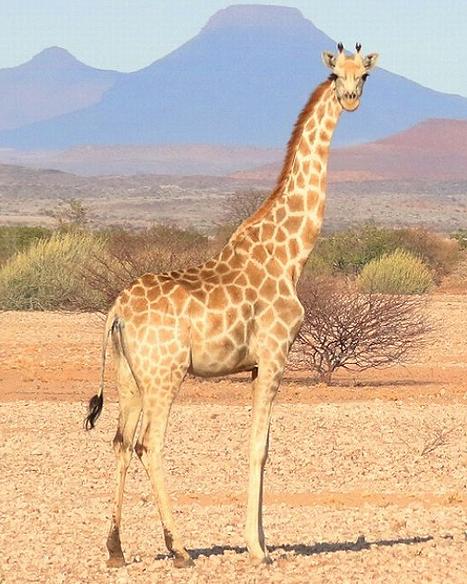
The taxonomic update will now guide upcoming IUCN Red List of Threatened Species™ assessments and influence national and international conservation policies aimed at halting giraffe decline.
The GOSG emphasizes that taxonomy is an evolving science. As new evidence emerges, the group will continue to reassess classifications to ensure conservation strategies remain grounded in the most up-to-date understanding of giraffe diversity.
In the 1980s, the total number of all giraffes in Africa was estimated at 155,000 individuals. The IUCN Giraffe and Okapi Specialist Group and GCF estimate the current Africa-wide giraffe population to be less than 100,000, a drop of almost 40 percent. In some areas traditionally regarded as prime giraffe habitat, numbers have dropped by more than 95 percent.
The four giraffe species have shown different population trends over the last three decades:
- Northern giraffe numbers have declined by more than 90 percent
- Reticulated giraffe numbers have declined by almost 80 percent
- Masai giraffe numbers have declined by more than 50 percent
- Southern giraffes have increased their numbers by more than double.
Members of the IUCN SSC Giraffe and Okapi Specialist Group Taxonomic Task Force are:
Robert Aruho: Mount Kenya Wildlife Conservancy, Nanyuki, Kenya
David Brown: IUCN SSC Giraffe and Okapi Specialist Group Member
Michael Brown: Giraffe Conservation Foundation, Windhoek, Namibia
Sabrina Fasoli: Department of Veterinary Medical Sciences, Alma Mater Studiorum,
University of Bologna, Italy
Julian Fennessy: Giraffe Conservation Foundation, Windhoek, Namibia / University
College Dublin, Ireland
Axel Janke: Goethe University Frankfurt / Senckenberg Natural History Museum,
Frankfurt, Germany
Klaus-Peter Koepfli: Smithsonian-Mason School of Conservation, George Mason
University, Front Royal, Virginia, USA
Arthur Muneza: Giraffe Conservation Foundation, Nairobi, Kenya
Stuart Nixon: Field Programmes, North of England Zoological Society, Chester Zoo,
Upton by Chester, UK
Paul Rose: Centre for Research in Animal Behaviour, University of Exeter, Exeter, UK
Russell Seymour: IUCN SSC Giraffe and Okapi Specialist Group Member
Jared Stabach: Smithsonian’s National Zoo & Conservation Biology Institute, Front
Royal, Virginia, USA
David Stanton: Cardiff School of Bioscience, Cardiff University, Cardiff, UK
Sven Winter: Faculty of Science and Technology, University of the Faroe Islands,
Tórshavn, The Faroe Islands
Featured image: A herd of Northern giraffes in Uganda’s Kidepo Valley National Park, March 23, 2020 (Photo © Michael B. Brown used with permission)
© 2025, Environment News Service. All rights reserved. Content may be quoted only with proper attribution and a direct link to the original article. Full reproduction is prohibited.

